Connecting state and local government leaders
President Obama's ambitious national rail vision didn't exactly materialize, but important infrastructure investments have been made in some key locations, like the tracks between Chicago and Detroit.
Route Fifty Roadmap is an ongoing series of dispatches from the semi-regular travels of the Route Fifty staff around the United States. | PREVIOUSLY: Pittsburgh
KALAMAZOO, Mich. — This city of around 75,000 residents is about midway between Detroit and Chicago, about 140 miles in either direction along the rail line that connects the nation’s third-most populous city with Michigan’s largest.
Along the way, the rail line stops here, at the historic downtown train station built by the Michigan Central Railroad in 1887. The city-owned station is the intermodal centerpiece of the Kalamazoo Transportation Center, which features bus bays with arched walkways that echo the arches found in the original Richardsonian Romanesque-style brick and sandstone structure.
The stretch of railroad track that extends southwest from Kalamazoo 97 miles to an important rail junction at Porter, Indiana, is owned by Amtrak. That’s fairly unusual for the U.S. national intercity passenger rail network, which relies on track accommodations from freight rail providers. It’s the longest Amtrak-controlled rail line outside of the busy Northeast Corridor.
Article continues below ...
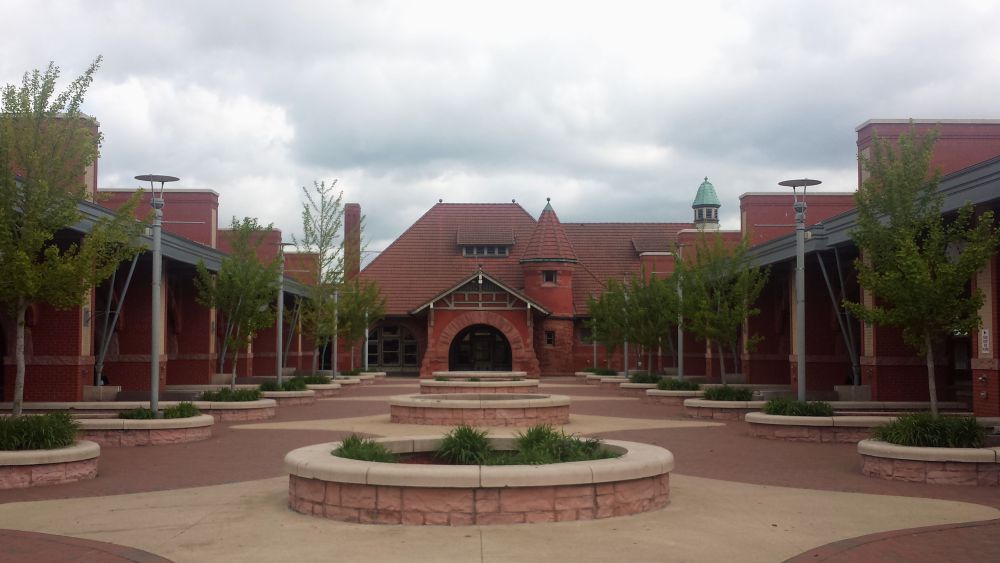
Article continues below ...
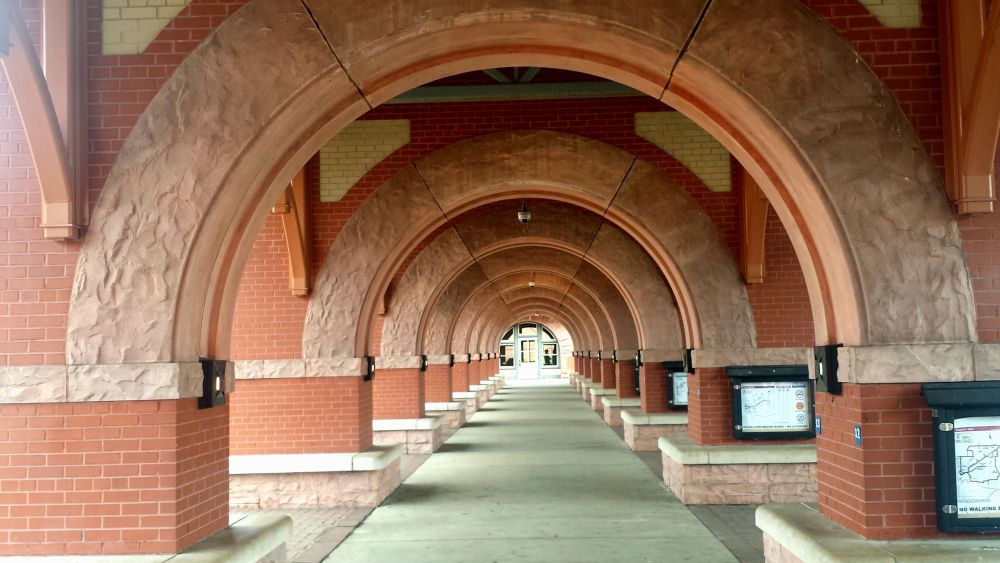
Those tracks have been upgraded to include positive train control safety technology and accommodate 110 mph rail service, which the federal transportation officials green-lighted in 2012 . In 2001, trains traveled along this corridor at a top speed of 79 mph, according to MLive.com. Scheduled travel time between Kalamazoo, which is home to Western Michigan University, and Chicago Union Station is now about two and a half hours via Amtrak’s Wolverine and Blue Water services, assuming there are no delays.
Unlike some states where governors have turned down federal high-speed rail funding during President Obama’s first term in office—in 2010, Wisconsin Gov. Scott Walker refused $810 million in federal funds for rail expansion between Milwaukee and Madison—Michigan has worked to improve performance, speeds and reliability along the Chicago-Detroit line.
In 2012, tapping Federal Railroad Administration High-Speed Intercity Passenger Rail Program grants, the Michigan Department of Transportation purchased 135 miles of Norfolk Southern-owned tracks between Kalamazoo and Dearborn for $140 million. The feds awarded MDOT an additional $196.5 million for track and signal upgrades to accommodate expanded 110 mph rail service. That work is underway along that section of track.
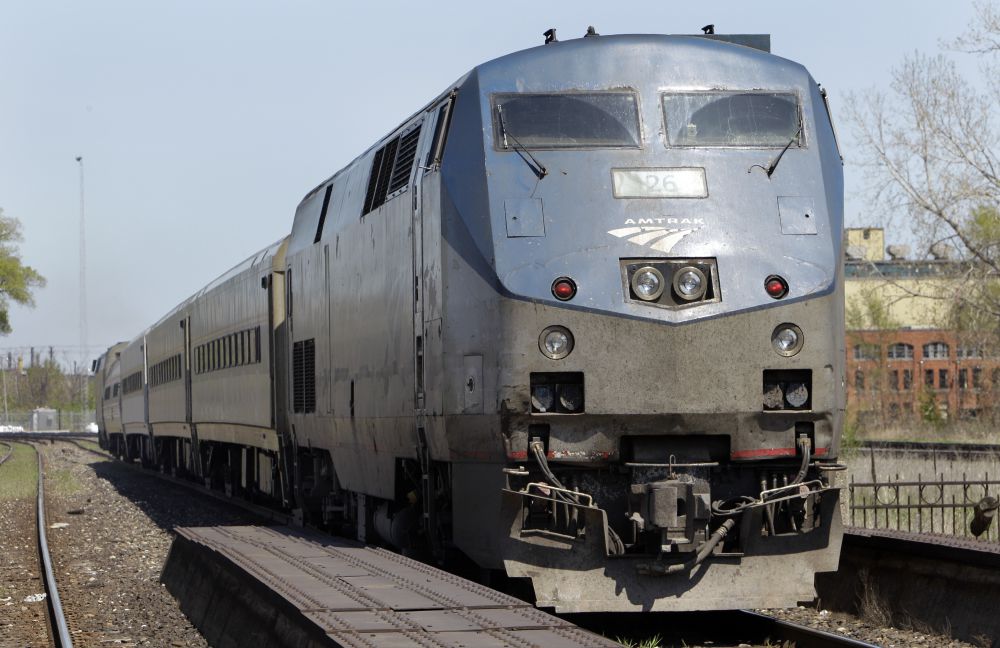
The upgrades, when fully implemented along the entire route, will cut down the rail trip between Detroit and Chicago to about five hours. And that makes riding Amtrak more reliable and competitive with driving along the often congested Interstate 94 corridor across Michigan’s southern tier and northwestern Indiana and into traffic-clogged Chicago.
While those 110 mph top speeds pale in comparison to even higher-speed rail service in Europe and Asia , they’re nevertheless important incremental improvements for intercity passenger rail service in the U.S., which still largely relies on corridors where intercity passenger service must share tracks with freight trains.
When President Obama announced his administration’s ambitious national high-speed rail infrastructure initiative in April 2009, it laid out a multi-billion vision for boosting rail speeds in networks organized around regional hubs, including Chicago.
As The New York Times reported on the president’s announcement at the time:
“What we need, then, is a smart transportation system equal to the needs of the 21st century,” he said, “a system that reduces travel times and increases mobility, a system that reduces congestion and boosts productivity, a system that reduces destructive emissions and creates jobs.”
And he added, “There’s no reason why we can’t do this.”
But many Republicans in Congress and in state capitals frowned on the federal investment in rail infrastructure, so Obama’s grand vision didn’t materialize during his two terms in office.
But the efforts made did result in some important and critical improvements along sections of track, like the ones being made to accommodate 110 mph Amtrak service and eliminate rail chokepoints. The incremental improvements are starting to pile up and strengthen service in some corridors, like Chicago-Detroit and Chicago-St. Louis, but there’s a lot of work left to do. And there’s a far bigger need for additional federal, state, federal and local commitments to make U.S. rail travel compete with other nations that have made ambitious infrastructure investments.
There’s one big reason why intercity passenger rail service has been unreliable heading in and out of Chicago: Amtrak trains from Michigan and the East Coast are often delayed due to freight rail trains heading through key regional track chokepoints, one of them at Porter, Indiana, where multiple lines converge.
The Indiana Gateway rail project that is currently underway will provide a bypass track for Amtrak trains through the Porter junction and other spots in northwest Indiana.
And on Chicago’s South Side, one key chokepoint removal project is already in service and benefits not only Amtrak service but commuter rail service south of Chicago. The Englewood Flyover, which went into service in October 2014 near a point where the Chicago Skyway and Dan Ryan Expressway meet, eliminates an at-grade track crossing, which previously caused major delays for Amtrak and Metra Rock Island District commuter rail service.
Those projects will improve rail service for Amtrak riders heading between Chicago and Detroit and the corridor of medium-size cities along the Interstate 94 corridor, including Kalamazoo, Battle Creek, Jackson and Ann Arbor, home to the University of Michigan.
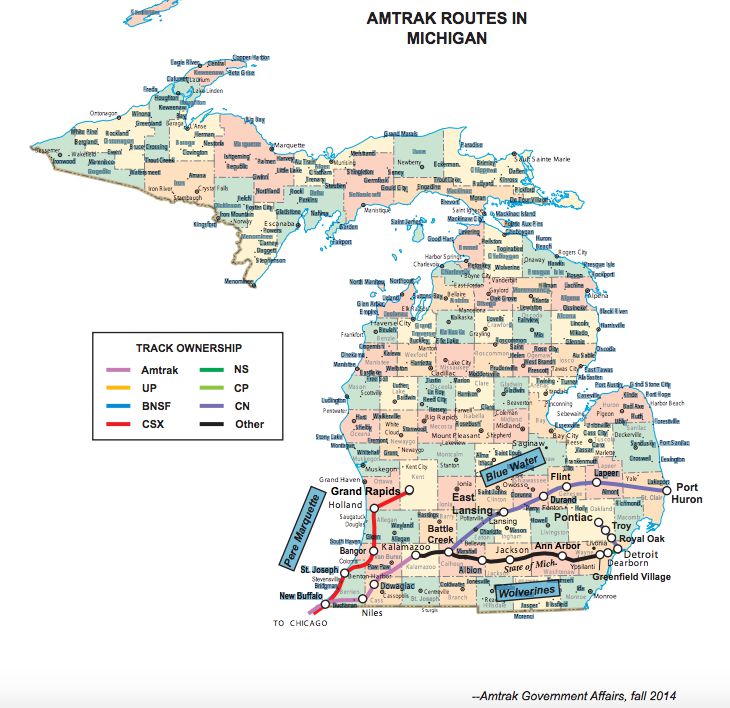
Michigan’s second-largest city, Grand Rapids, a regional hub for the western side of the Lower Peninsula, is not connected to the Chicago-Detroit corridor and instead has infrequent, slower service to Chicago via a lakeshore routing that is owned by CSX.
The Michigan Department of Transportation is officially studying a cross-state rail corridor connecting Holland, Grand Rapids and Lansing with Detroit , but any such rail service is years away from reality, assuming Michigan makes it a transportation priority.
State officials recently told mibiz.com that connecting Grand Rapids to the high-speed rail corridor at Kalamazoo “ isn’t a priority ” though it has been discussed among stakeholders.
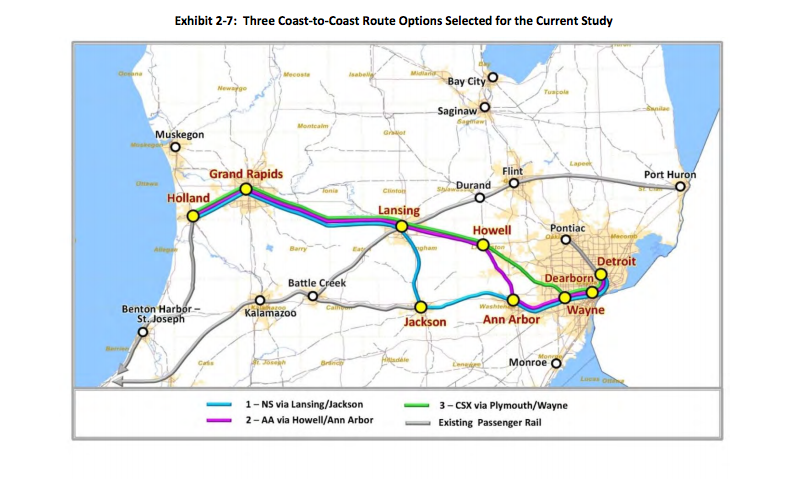
That would require negotiations with the owner of the tracks between Kalamazoo and Grand Rapids and, likely, additional investment to improve the tracks. Officials would have to navigate the political complexities of rerouting Amtrak’s existing Grand Rapids-Chicago Pere Marquette rail line away from lakeshore communities like St. Joseph.
Either way, civic and business stakeholders understand the benefits of speeding up service between Grand Rapids and Chicago and also providing an important transportation link between Grand Rapids, Kalamazoo and the existing and more frequent rail service to Ann Arbor and Detroit.
“Anything we can do to enhance connectivity between West Michigan, Chicago and the east side of the state is a positive,” Rick Chapla, vice president of Grand Rapids-based The Right Place Inc. regional economic development firm, told mibiz.com . “[A route from] Grand Rapids to Kalamazoo allows us the mobility to go east and west. It’s a critical link.”
But it’s nowhere near reality.
For the time being, the 110 mph rail service being implemented along Amtrak’s Chicago-Detroit line is the best Michigan’s going to get. And those investments put Michigan ahead of most states when it comes to intercity rail development during the Obama administration.
The improvements made by Amtrak, the Michigan Department of Transportation and partner agencies in Illinois and Indiana to the Chicago-Detroit line, are some of the biggest pieces of Obama’s high-speed rail vision that have come together.
And they put Kalamazoo’s transportation hub in a really good position smack-dab midway between Detroit and Chicago. ( Bell’s Brewery is just a few blocks away , too.)
Next Stop: Bucksport, Maine
Michael Grass is Executive Editor of Government Executive's Route Fifty.

NEXT STORY: Here's Why the Education Department’s New Equity Rule Might Not Be So Equal




